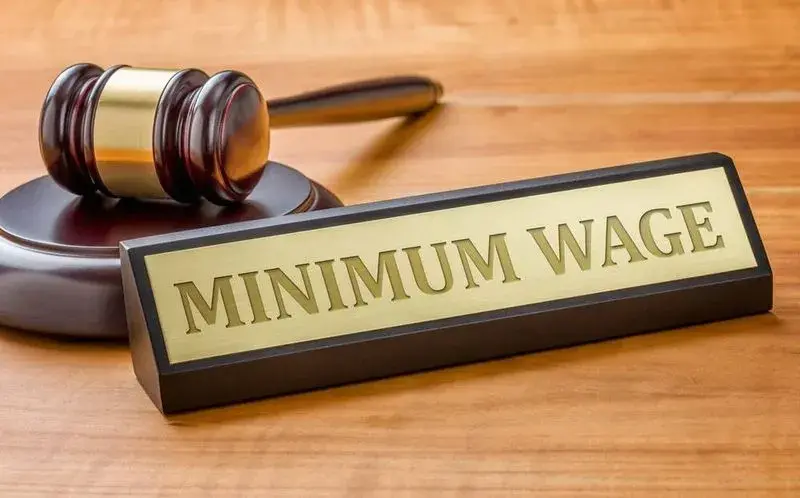By Rupin Chopra and Vidhi Oberoi
The term ‘living wage’ refers to an income level in theory that allows the citizens or families to afford a sufficient amount of food, shelter, and other important necessities. The main motive of the living wage is to allow the workers or the employees to earn enough level of income for a sufficient standard of living and also to restrain them from falling into poverty.
The concept of a Living wage first arrived in America when workers demanded higher pay for labor. The concept of a living wage is much different than the concept of minimum wage, which is the lowest amount of money that a worker can earn as stated under the law.
The supporters of the concept of living wages assert that this will increase the output and morale among the employees. On the other hand, critics have argued that this idea might harm the economy and push businesses to lay off their workers.
The majority of people are of the opinion that a living wage is one that helps individuals to support themselves without falling below the Federal Poverty Line (FPL). In essence, it provides employees’ families with the resources to maintain a respectable quality of living so they can afford basic needs such as housing, education, food, regular savings etc.[1]
The idea of a living wage became a hot topic following the period of the Great Recession. The crisis highlighted the fact that some employees wouldn’t able to afford to make the ends meet. Some people believe that employees who do not earn a living wage face many challenges such as working more than one job, not being able to send their kids to school, etc.
UN’s and Foreign Nations Take on the concept of the living wage :[2]
The UN Global Compact encourages companies to promote and provide a living wage as a crucial aspect of the reasonable standard of work to ensure that all employees and communities can live with stateliness.
The state plays an important aspect with respect to supporting wage-fixing mechanisms at a sectoral level. According to the UN’S data, more than 170 countries have one or more minimum wages set by the law.
As a part of the corporate responsibility to protect and respect the rights of humans outlined by the UNGP, working poverty caused by low wages in the workspace should be highlighted in the human rights due diligence in approaching business conduct.
To address the problem of low wages the State and the United Nations global compact took some actions to ensure a living wage for all employees:
- In 2021, the UN Global Compact published statements in support of living wages and living income economies.
- In 2022, the UN Global Compact partnered with IDH to launch the Think lab on the living wage.
- In June 2022, the ILO adopted the resolution on the concept of a living wage.
- Countries such as the German, Dutch and Belgian governments signed a joint declaration in January 2021 to promote living wages and incomes.
Will India move to Living Wage?[3]
The Government of India is considering the decision to shift from minimum wages to living wages to eliminate the problem of poverty in the country. If such a change takes place, it might not be advantageous in terms of the financial development of the company as well as towards the nation. However, it will make it simple to fulfill the commitments toward sustainable development goals. India intends to use the ILO’s aid to better grasp what a living wage is since it is more subjective. ILO member nations, including India, have asked the Organisation to conduct a peer-reviewed study on the idea and estimates of living wages in order to contribute to a better understanding of the notion.
Why there is a need to shift?
There is a need to shift because workers at the lowest pay tier are harmed by the minimum wage rates, which are frequently not fulfilled even in places where they are created.
Without the concept of a living wage, the employees might be forced to:
- Multiple jobs or overtime hours
- Sending their children to work instead of going to school.
- Unable to withstand a crisis such as a medical emergency.
The living wage is important because low-wage workers must rely on benefit payments to survive, and it can cut government spending. Upon receiving a living wage, the government may reduce benefit payments.
Difference between living wage and minimum wage:
- The concept of a living wage is concerned with the minimum income which is necessary for an employee to meet their basic necessities. Which is different from the minimum wage, as it is based on workforce efficiency and skill levels.
- A worker’s minimum wage is the lowest wage amount of money they are legally permitted to earn. It doesn’t alter in response to inflation. Only with the government’s assistance, it can rise. On the other hand, the living wage contradicts this.
- While the minimum wage is a defined sum that is imposed under the law. The living wage is decided by the average cost to live a comfortable lifestyle.
Conclusion
Many employees and low-wage workers experienced a job loss or were compelled to work for low pay during the period of covid-19. India’s wage report reveals that low pay and wage disparity continue to be major obstacles to the country’s quest for growth and favorable working conditions. The tendency of low pay among employees is on the decline, but with the implementation of the living wage, the nation is more likely to meet its objectives.
Rahul Verma, Intern at S.S. Rana & Co. has assisted in the research of this article.
[1] https://www.ethicaltrade.org/issues/living-wage-workers
[2] https://www.unglobalcompact.org/what-is-gc/our-work/livingwages
[3] India’s wage report


